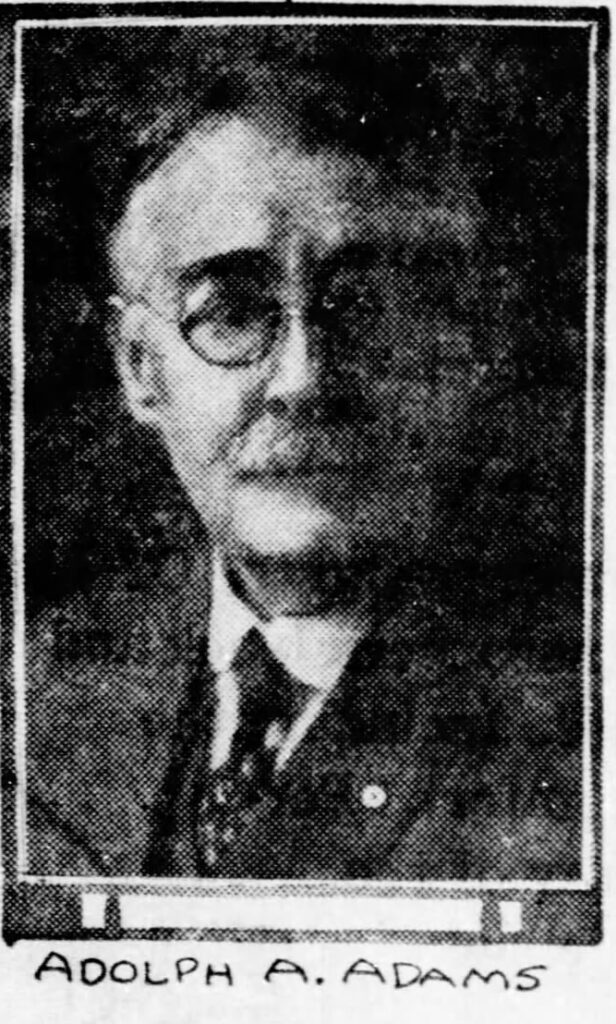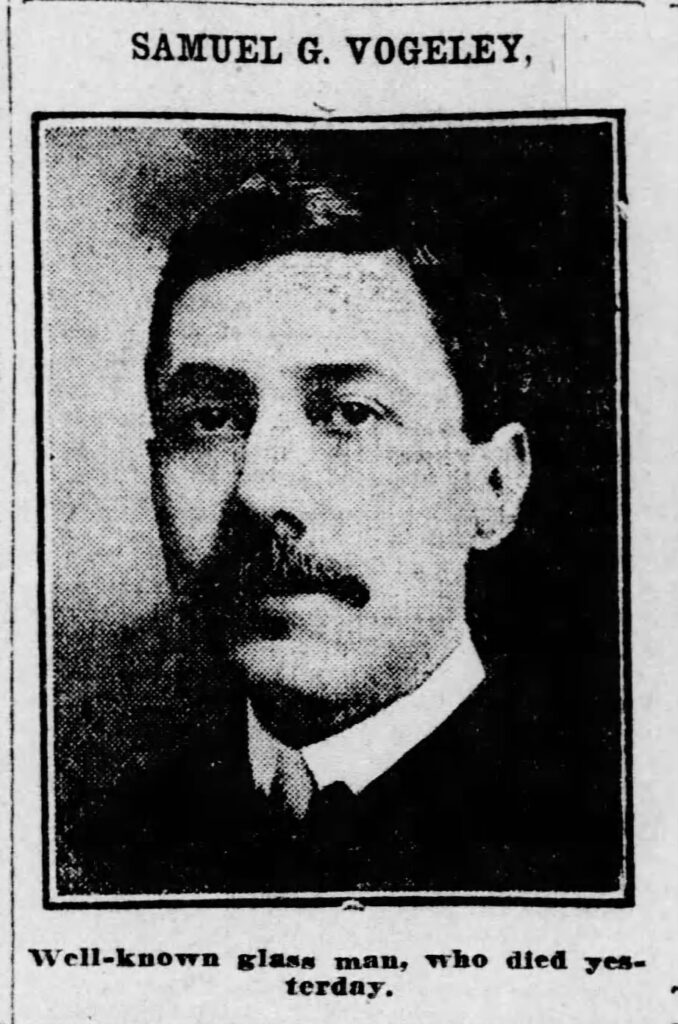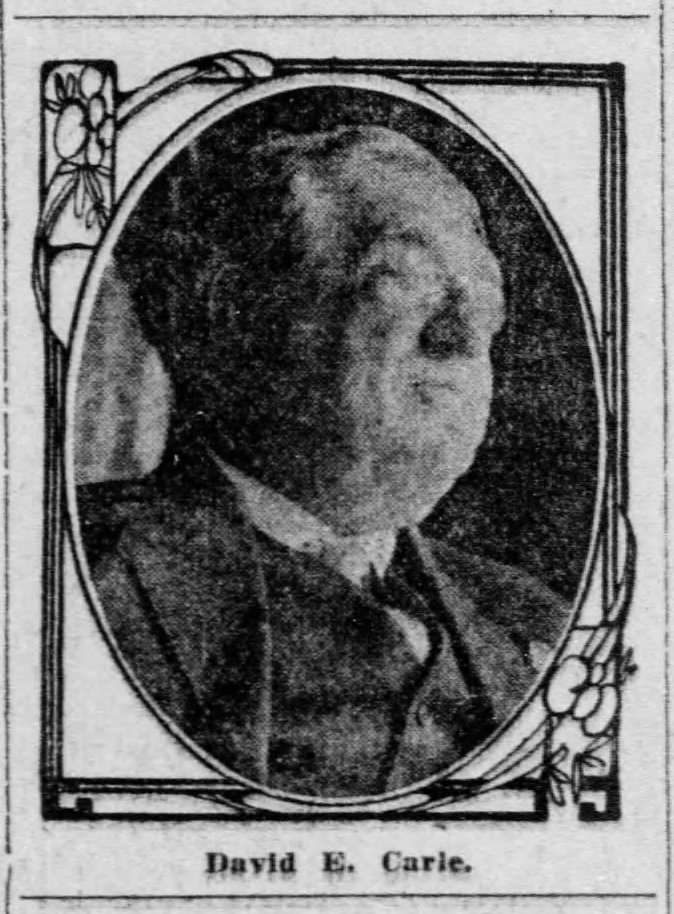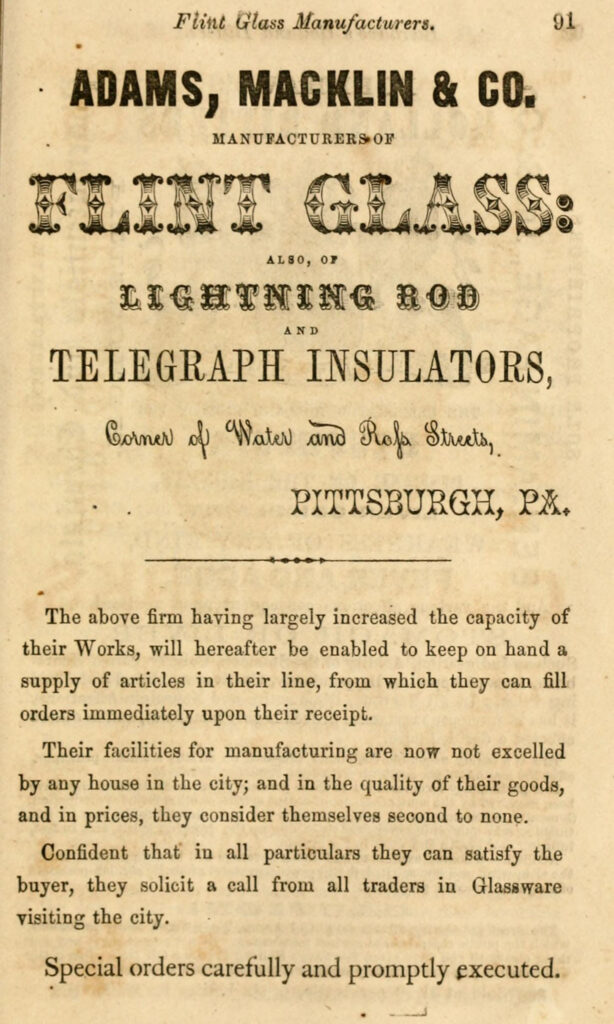
For fans of early American pressed glass, Adams & Co. is a prominent name, known for its diverse range of products and designs that captured the trends of its era. Among its most notable creations was the Sphinx tableware pattern, which reflected the fascination with Egypt during that time, sparked by the unearthing of new burial sites and the placement of one of Cleopatra’s Needles in Central Park, New York.
The earliest reference to a glass works under the direction of John Adams dates back to 1852. This enterprise operated under the names Bohemian Glass Works and Adams, Roseman & Co., situated at the intersection of Water and Ross Streets. John Adams partnered with Joseph Roseman (who passed away in 1899), who remained involved with the company until his retirement in 1887.
The next style of the company was Adams, Macklin & Co., with the first documented mention occurring in 1854, also located at Ross and Water Streets. Tragically, that same year, Thomas Macklin succumbed to cholera at just 34 years old.
In 1861, the business adopted its final name, Adams & Co. Advertisements during this period indicate they manufacturer flint glassware as well as green and flint fruit jars. They also list new addresses including No 12 at the corner of Wood and Front Streets as well as a location on the South Side, then known as Birmingham. The South Side address is listed at Center and Carson.
By 1863, the company publishes it new address of McKee (now 10th) and William (now P.J. McArdle Rdwy) Streets on the South Side of Pittsburgh. The glass house will spend the remainder of its operations at or around this location, expading to several additional lots in this neighborhood.
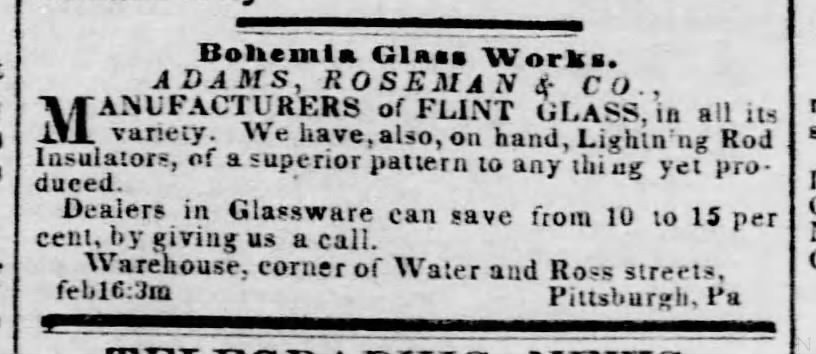
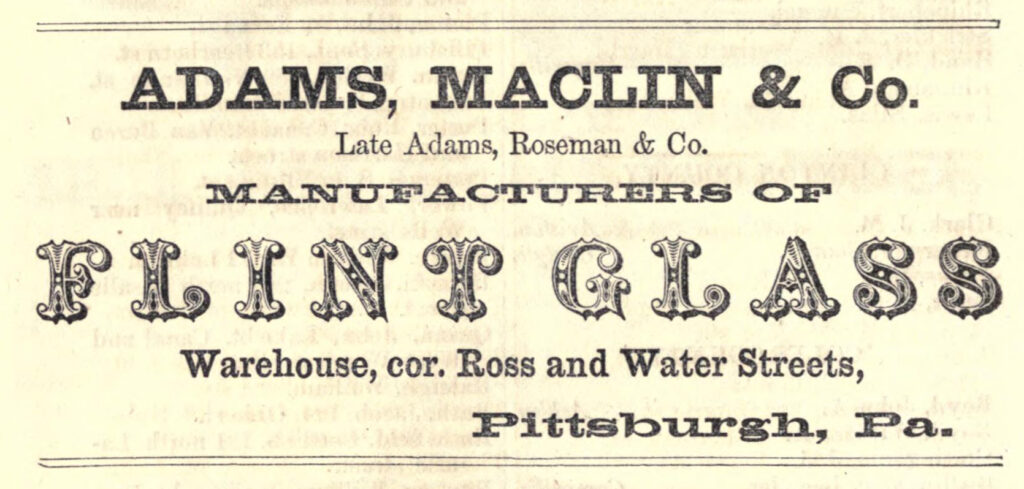
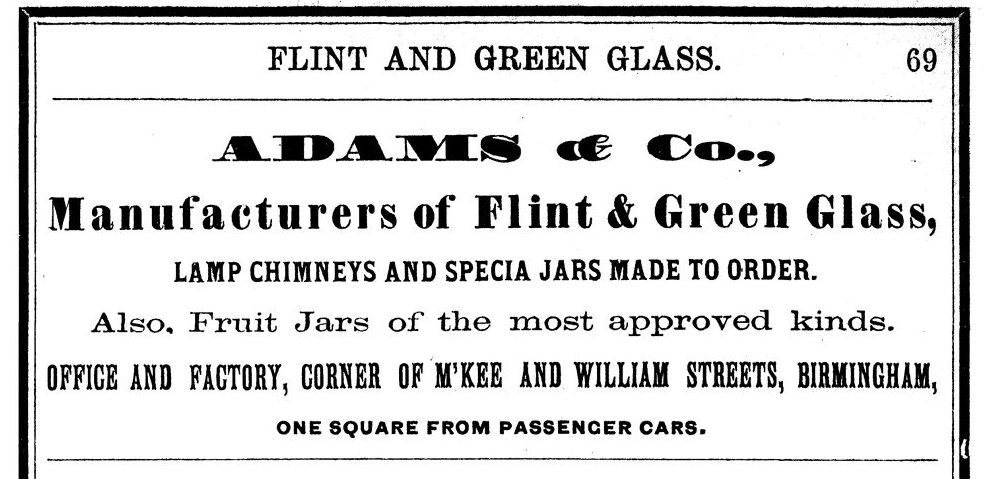
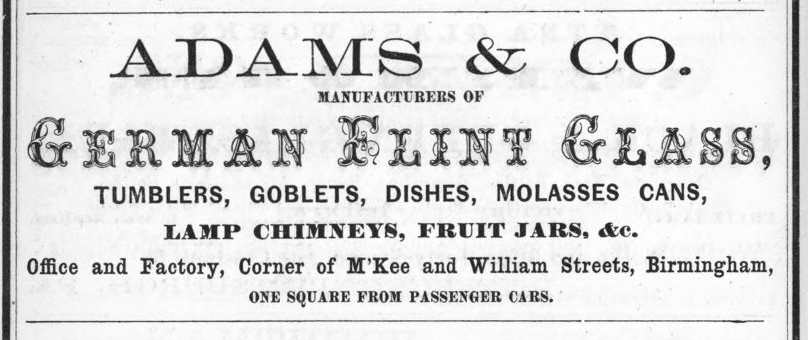
In 1874, the partnership changed, removing Peter Kunzler (d. 1919) and leaving John Adams, John Malone, George F. Easton and God(tt)fried Miller as partners. In 1875, John Adams sons Augustus A. Adams (d. 1926) and William Adams (d. 1916), entered into the partnership along with James Dalzell (d. 1893). In 1877, John Malone leaves the firm.
By 1879, the the leadership included John Adams, his sons Augustus and William, James Dalzell, as well as George F. Easton (d. 1902) and God(tt)fried Miller (d. 1910). By that same year, Adams & Co. had expanded to over two acres on Williams Street, now P.J. McArdle Rdwy, on the South Side of Pittsburgh, boasting two factories alongside five additional buildings and two furnaces with a combined total of 23 pots. Their range of products featured tableware, lamp chimneys, lamps, and jelly tumblers. The firm generated annual sales nearing $200,000, serving clients throughout the United States, Canada, Cuba, and South America. The workforce comprised around 200 skilled artisans, with an average weekly payroll amounting to approximately $10 per worker.
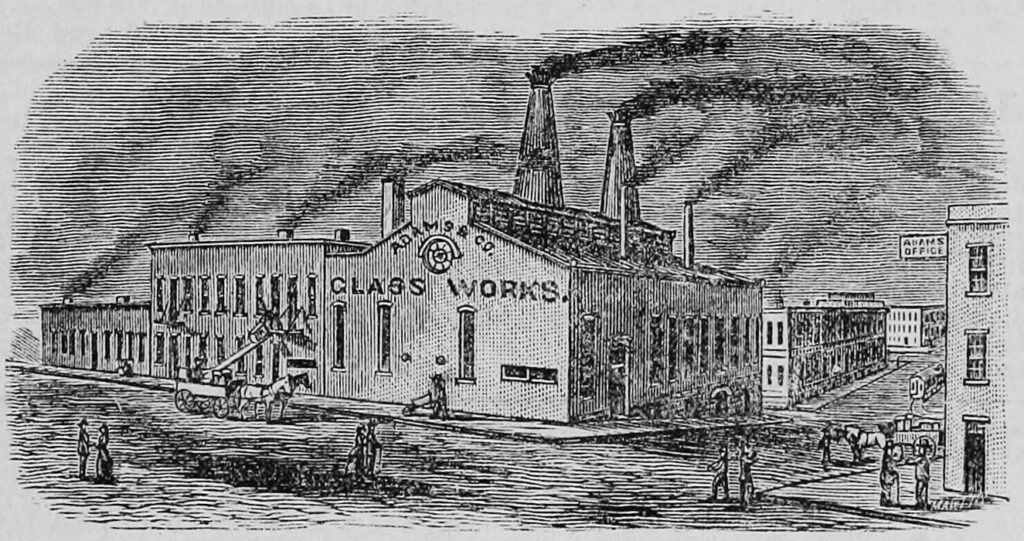
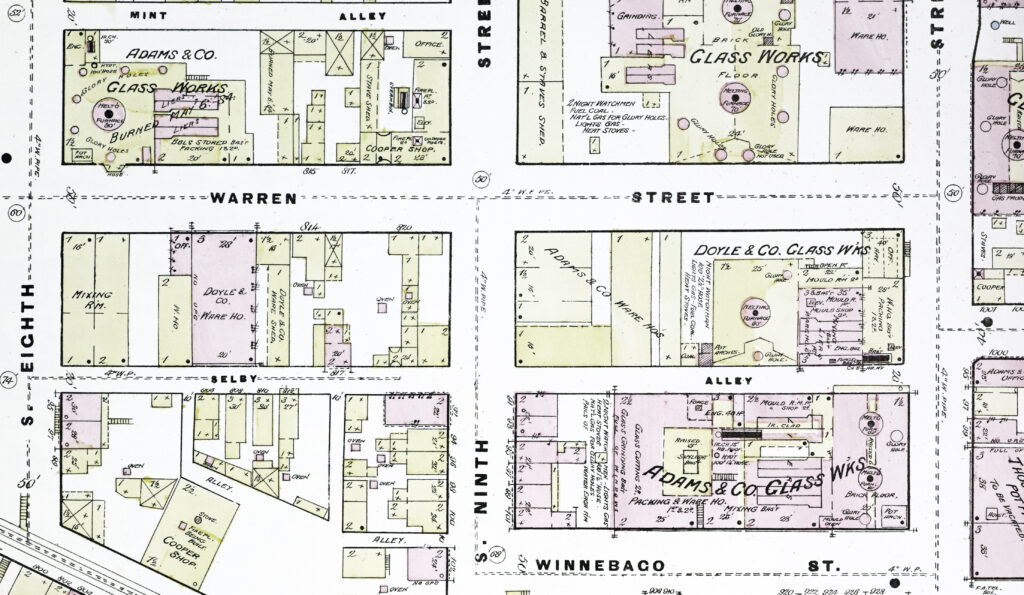
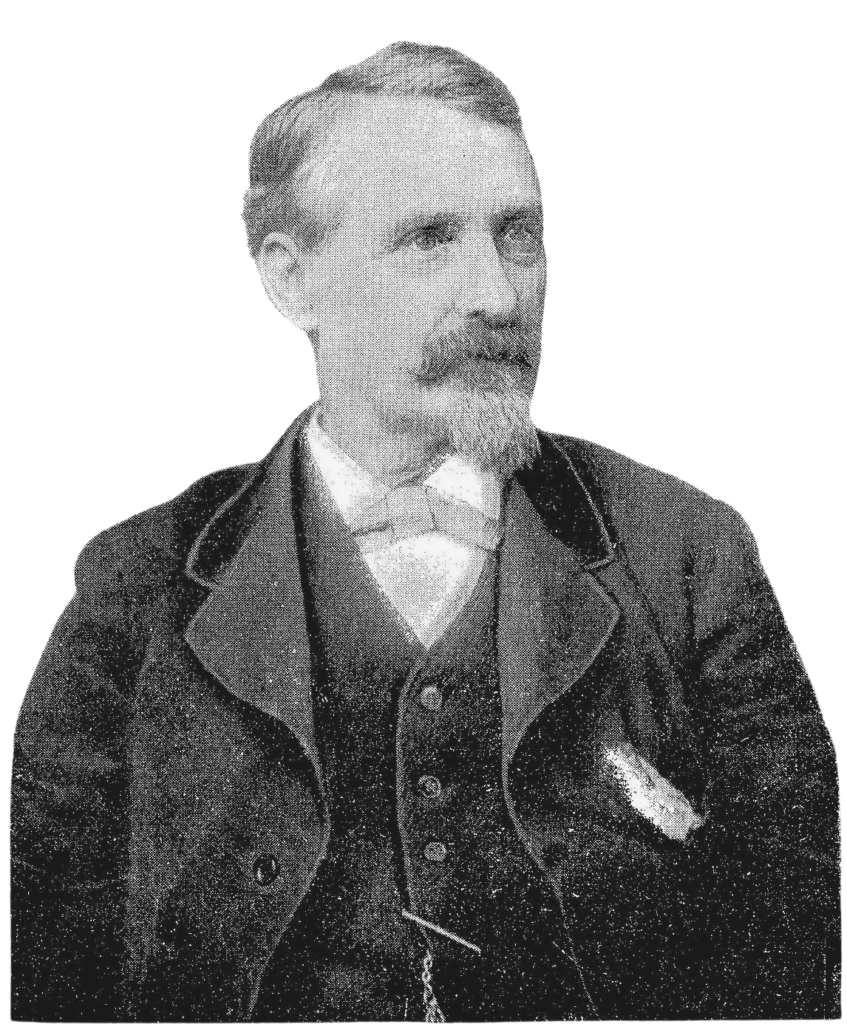
In 1880, D. (David) E. Carle (d. 1915) who joines the firm. On or before 1882, Samuel G. Vogeley (d. 1907) joins the firm producing many memorable designs for the firm. In 1883, James Dalzell leaves the company to start his own firm Dalzell, Bros. & Gilmore at Wellsburg, West Virginia.
In 1884, a notable article appears highlighting the fire that is listed as part of the Sandborn map from that year. According to the article, the property was originally owned by Challinor, Hogan & Co., a lamp manufacturer, and leased to Adams & Co. in January who retrofitted it to the tune of $3K. The building was destroyed within an hour and started in the lears or lehrs which manages the annealing process. This location and the map from 1884 highlights the expansion challenges during this time. The same location would experience another devastating fire in 1887.
At the beginning of 1886, the announcement of the first glass syndicate was announced that included Adams & Co. It would take several more years for this glass syndicate to come into being under the style of the U.S. Glass Trust of 1891.
At the end of 1886, John Adams dies.
Once the company became a part of the U.S. Glass trust in 1891, it was designated as factory A. While some partners chose to stay with U.S. Glass, many others pursued different opportunities or retired. Miller chose to retire, Easton and both sons went on to other opportunities. Vogeley continued on with U.S. Glass until his death in 1907 while Carle went on to work for McKee Glass in Jeannette and then as the General Manager for the National Glass Co., another glass trust, until 1904 when he retired.
